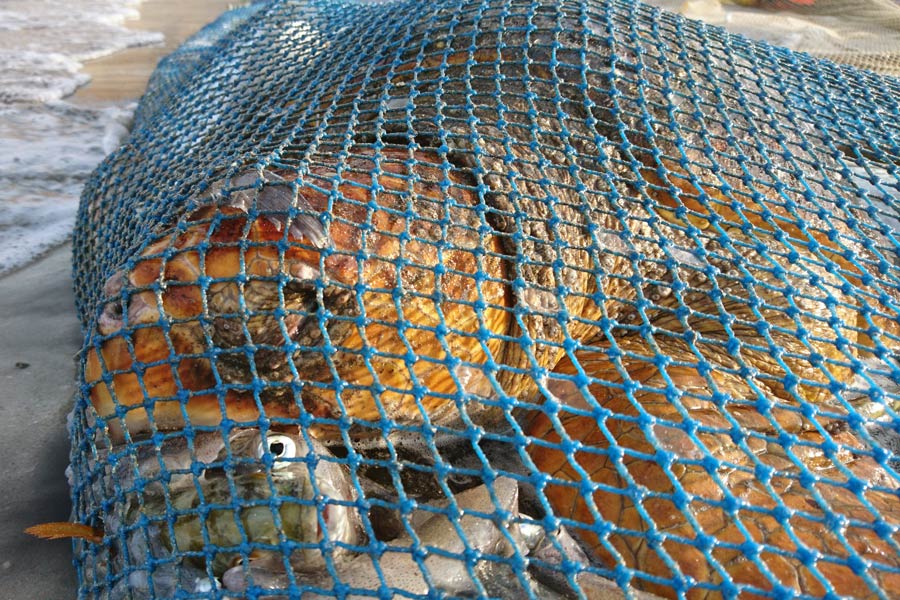
Ghost gear is not the only fishing gear related threat to marine animals; bycatch is another big – and global – problem. Fishing nets are often baited to attract the fish. Unfortunately, the bait also attracts other animals looking for an easy meal.
Bycatch victims
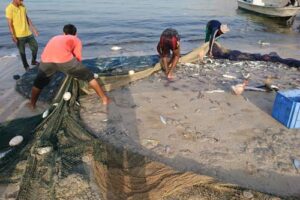
According to WWF, 40% of the fish caught worldwide is unintentional. This unwanted catch will likely be thrown back into the ocean after a stressful experience, which frequently results in death and injury. Some fishermen leave their unwanted catch on the beach, so there is no chance for surviving bycatch to recover.
It is estimated that 300,000 small whales and dolphins, 50 million sharks and rays and 250,000 turtles die annually as bycatch. Many of these animals are keystone species, which means they play a crucial role in their ecosystem. As a result, ecosystems may collapse without them.
Bycatch
incident in Oman
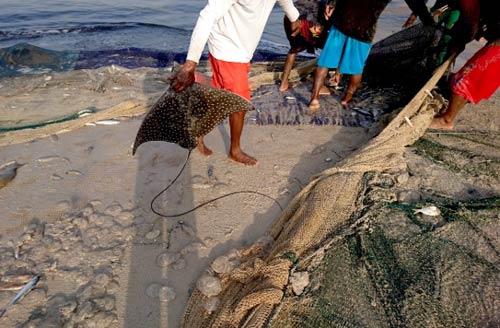
At our base in Oman, we see the effects of bycatch from live fishing nets first hand. In April 2019, one fishing net contained an eagle ray, a loggerhead turtle and a young guitar fish caught as bycatch. Sadly, the guitar fish did not survive the ordeal. The loggerhead turtle and eagle ray were unharmed, but very stressed out.
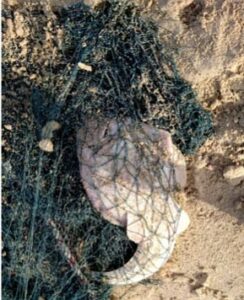
Because the eagle ray was very strong and erratic, the only way to return it to the sea was to grab it by the spiracles (where the eagle ray takes in water for respiration). We don’t know if this will cause any damage to the eagle ray.
The most common way we have observed that fishermen remove turtles from their nets in this region (including in this incident), is by pulling the turtle’s back leg. Turtles can be very heavy animals, so pulling its back leg to move it could cause damage. The turtle should instead be lifted by the shell to free it from the fishing net (we intervened in this incident).
Lucky loggerhead survivor
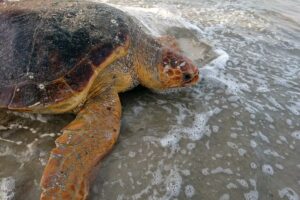
This turtle was lucky to be alive; turtles can become stressed out when trapped in the net and therefore need to breath more frequently. Because turtles are reptiles, they breathe air just like humans. If they are stuck in the net itself, or if the net is submerged, they may be unable to reach the surface. This will result in the turtle drowning.
How can we prevent bycatch?
What fisheries can do to prevent bycatch
Awareness
In many parts of the world education plays a large part in reducing issues such as bycatch. Fishers might not be aware of the impacts of losing animals such as turtles and dolphins, and how it might affect the ecosystem, and thus the fishers future yield.
Nets & baits
Depending on the species of animals caught as bycatch, there are different methods to reduce it. For example, using a thicker twine on the fishing net makes it easier for dolphins to detect it through echolocation and therefore avoid it. Tailoring the bait to ensure it does not attract the usual bycatch victims is another simple method to reduce impact.
TEDs
Turtle Excluder Devices (TEDs) fitted in trawler nets allow turtles and larger marine animals to escape if captured in a fishing net. This is a very simple and inexpensive way to reduce bycatch, especially in shrimping nets.
Reduce fishing net use
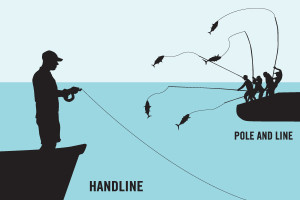
Removing nets altogether and replacing them with the pole and line method is an extreme, but very effective, method. This is more labour intensive and may only be possible for larger fish, but it much more sustainable than fishing with nets. Many canned fish types available state that their fish are caught using pole and line. In Maldives, all tuna fishing happens this way.

